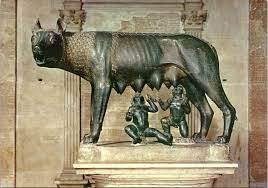
A number of people I know went to Italy this year. Overall their impressions were positive. The reasons for their trips varied. Some cousins proudly announced their journey was purely epicurean – food and wine was their goal and only Naples and Gaeta (along the coast to Rome) were their destinations.
Our own Rosario Iaconis made Rome a specific stop to reinvigorate his classical credentials – he hadn’t been there since 1992. (Sadly, I haven’t seen the Eternal City since 1987!) A neighbor of mine went to Italy for the first time in her 77-year life – it was a roots thing. However, her impressions surprised me. The grandeur of Rome escaped her, and she remarked that only two meals in her weeklong 3-city journey met her expectations – Roman lasagna was so-so.
In this age of mega-ship cruises and luxurious casinos, traditional sightseeing may be a disappointment to the average tourist. When I asked my cousins if they would visit Pompeii while in Naples it was akin to asking them if they wanted to visit a cemetery. Though fully Italic they have little or no interest in Italian history. When I asked my neighbor what she thought of standing in St. Peter’s basilica, she merely responded that she also saw the Sistine Chapel – as though it was just another tourist stop – no emotion to speak of.

I recall my reaction in 1984 to being inside St. Peter’s, awestruck by its vast inner space and details. I still recall the pride I felt exiting a Rome Metro stop, ascending to the street and seeing the huge Colosseum a few yards away. The skyscrapers of Manhattan hadn’t prepared me for that imposing wonder. Everything in Italy impressed me beyond words. Clearly, not everyone appreciates our legacy.
Just today, I came upon a quote by an ancient Greek poet who also had a similar issue with tourists. (I have replaced Athens with Rome in the quote): “If you’ve never seen Rome, your brain’s stuck in trivia. If you’ve seen it and weren’t amazed, you’re an ass.” Ancient Roman tourists traveling their empire often left the following graffiti on Greek and Egyptian monuments: “Miravi!” (“I was amazed!) Clearly, our classical ancestors were more emotional tourists than our current paesani.

Clearly, the above-mentioned journeys to the fatherland (la Patria) evidenced a pride and deep-seated desire to reconnect with their heritage, despite their superficial reflections. Rome may not have Italy’s best food, it may not be the cleanest or most efficient, but it physically contains our classical legacy and has been the motivation and passion of Italian patriots through the ages.
We should note that on September 20, 1870 Rome once again became the capital of Italy, after 1,500 years of Papal rule. The day before, Italian troops under the King Victor Emanuel II had ousted the French garrison that defended the city for the Pope. Rome was the final piece of the Italian puzzle that patriots such as Garibaldi, Mazzini, and Benso (Conte di Cavour) had strived to reassemble for decades. It fulfilled the dreams of Machiavelli, Dante, and others centuries before. It was akin to the Jewish wish of “Next year in Jerusalem!” Unfortunately, the Italian American connection to Rome and its history – ancient or modern – is negligible.
I doubt if many of our paesani could identify what SPQR stands for – it’s molded into Rome’s manhole covers – or the She-wolf statuary sold to tourists. The phrase Caput Mundi would stump them, too. In short, Rome is just the Colosseum and the Vatican.
Roma Aeterna! -JLM
[SPQR= Senatus PopulusQue Romanus or The Senate and Roman People. She-wolf with twins Romulus and Remus is from the city’s legendary founding. Caput Mundi = Capital of the World.]




I also went to Italy this year for the first time in 25 years and my impression was, I love it even more. In the future my wife and I definitely plan to spend much time there.
sometimes too the layers of history in Italy and Rome in particular, can be overwhelming. I remember some comments by the psychologist, Carl Jung that he could never visit the city, for fear of being overwhelmed by its archetypal history as the center of Western civilization for over 2000 years. In all his world travels he could never visit Roma
I recall a scene from Fellini’s Roma, where in the process of working on the metro, workers broke into a stunning ancient chamber, and as the workers gazed in amazement, the murals started to fade and vanish since the air rushing into the chamber destroyed the precious murals. It was a haunting scene kind of symbolic of its archetypal past…even the mass of tourists ad to the cacophony of energy ……maybe it was better those tourists could not find the perfect lasagna.(it is not from that region anyway!).’
People of Italian descent are on many levels, some food, wine, bocce, social club members, some very educated and some with litle. There are many levels of devotion, interest, knowledge about Italy. Most of the Italian organizations 44 years ago were social. That is why in 1979 I founded the American Italian Heritage Association and in 1985 the American Italian Heritage Museum. We are a cultural group, many of our members who go to Italy are interested in the culture of Italy. Most will visit the museum and historic sites. Italian Americans are a very diverse group. Like Italians, Italian Americans are creative but often don’t know or appreciate their rich heritage as they should.
But that is also common in Italy itself, when I visit my family there, they have never been to Venice, or some other popular tourist destinations…I do know that some of the other European countries provide regional field trips or excursions to their youth at the high school level….as far as I know, that is not the case in some of the Italian provinces..